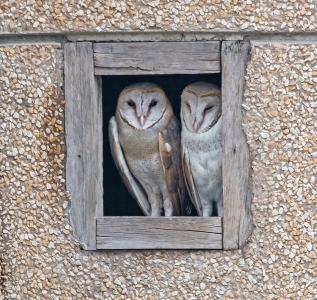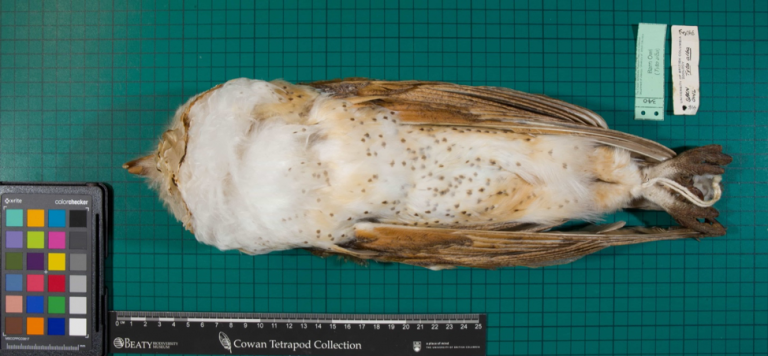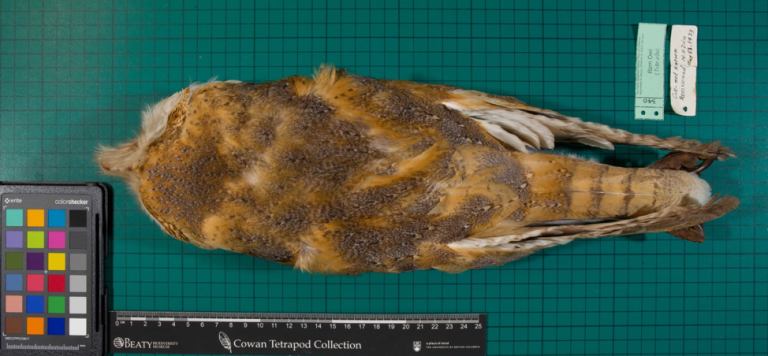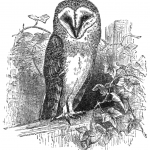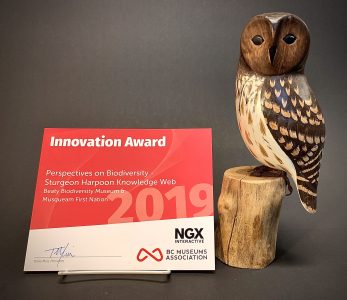 At the Beaty Biodiversity Museum, we are over the moon in love with owls. We are busting with pride at having earned an ‘Innovation Award’ from the BC Museum Association for Perspectives on Biodiversity – Sturgeon Harpoon Knowledge Web. Part of this award was a splendid Barred Owl designed by Anna & David Hall. Their sculptures are carved in Indonesia by two families who each have centuries of carving heritage, and are purchased at fair trade wages. The owl is carved from Albesia wood, a very swift growing tree in Indonesia, which makes it a replenishable and sustainable material for art and other manufacturing.
At the Beaty Biodiversity Museum, we are over the moon in love with owls. We are busting with pride at having earned an ‘Innovation Award’ from the BC Museum Association for Perspectives on Biodiversity – Sturgeon Harpoon Knowledge Web. Part of this award was a splendid Barred Owl designed by Anna & David Hall. Their sculptures are carved in Indonesia by two families who each have centuries of carving heritage, and are purchased at fair trade wages. The owl is carved from Albesia wood, a very swift growing tree in Indonesia, which makes it a replenishable and sustainable material for art and other manufacturing.
Barn Owls are Professor Alexander Roulin passion. Roulin has teamed up with Psychologist, Christine Mohr, to investigated why people view owls as good or bad. At the University of Lausanne, they have developed this questionnaire now available in 30 languages. Its aim is to help shift how owls are perceived globally. In regions where owls are considered evil or harbingers of doom these wonderful birds are persecuted. Survey results will be used for educational purposes in order to promote greater global appreciation for these wonderful birds.
How do you view owls? Please consider voicing your thoughts in this 5 minute survey. You will be helping nature conservation efforts plus can test your skills in recognizing owls.
While attending the 2018 International Ornithological Congress, Professor Alexandre Roulin came to the Beaty Biodiversity Museum to look at the plumage of our Barn Owls. Roulin measured the size and number of spots on breast feathers. He also looked at the russet hues of all our BC Barn owls plus our specimen from the Falkland Islands.
For over 4 decades, BIOL 427 students have handled and been asked to identify T000340 on lab exams. This much used specimen is looking pretty good and has several more decades of teaching to do.
When this Barn Owl drawing was published, their scientific name was Strix flammea. Now they are called Tyto alba acknowledging how different they are from true owls and are classified in their own owl family, the Tytonidae.
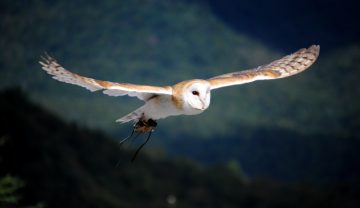
Barn Owl flying by Kristina Servant, Wikimedia Commons commons.wikimedia.org/wiki/File:Barn_Owl_flying.jpg
Driving at night, Barn Owls can be seen in the more rural areas of the lower mainland and especially near farmlands, marsh areas and other grassland habitats. Globally, Barn Owls are the most cosmopolitan and the flagship species of the Tytonidae.
Have you ever seen a Barred Owl? Have you ever heard one? They don’t “Hoot“ like regular owls at all!
Learn more about Canada’s owl species in the links below:
Nature Canada – Who’s there? Identifying owl calls
The Owl Foundation – Canadian Owls

